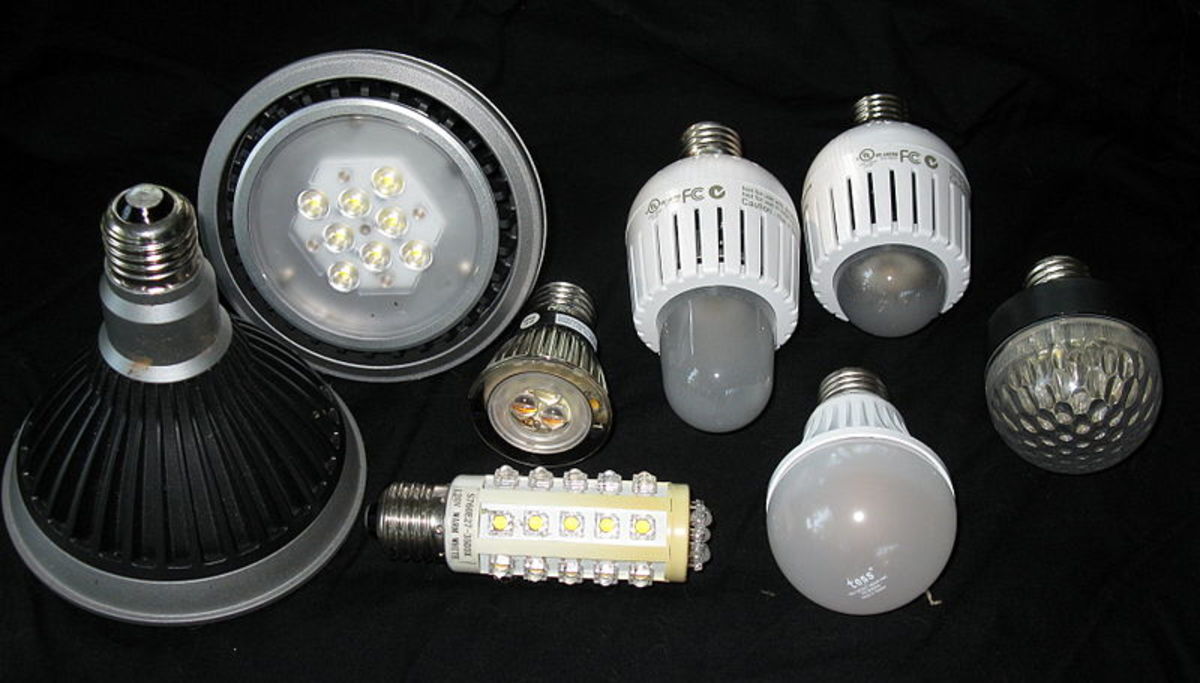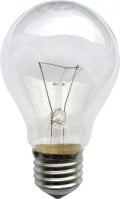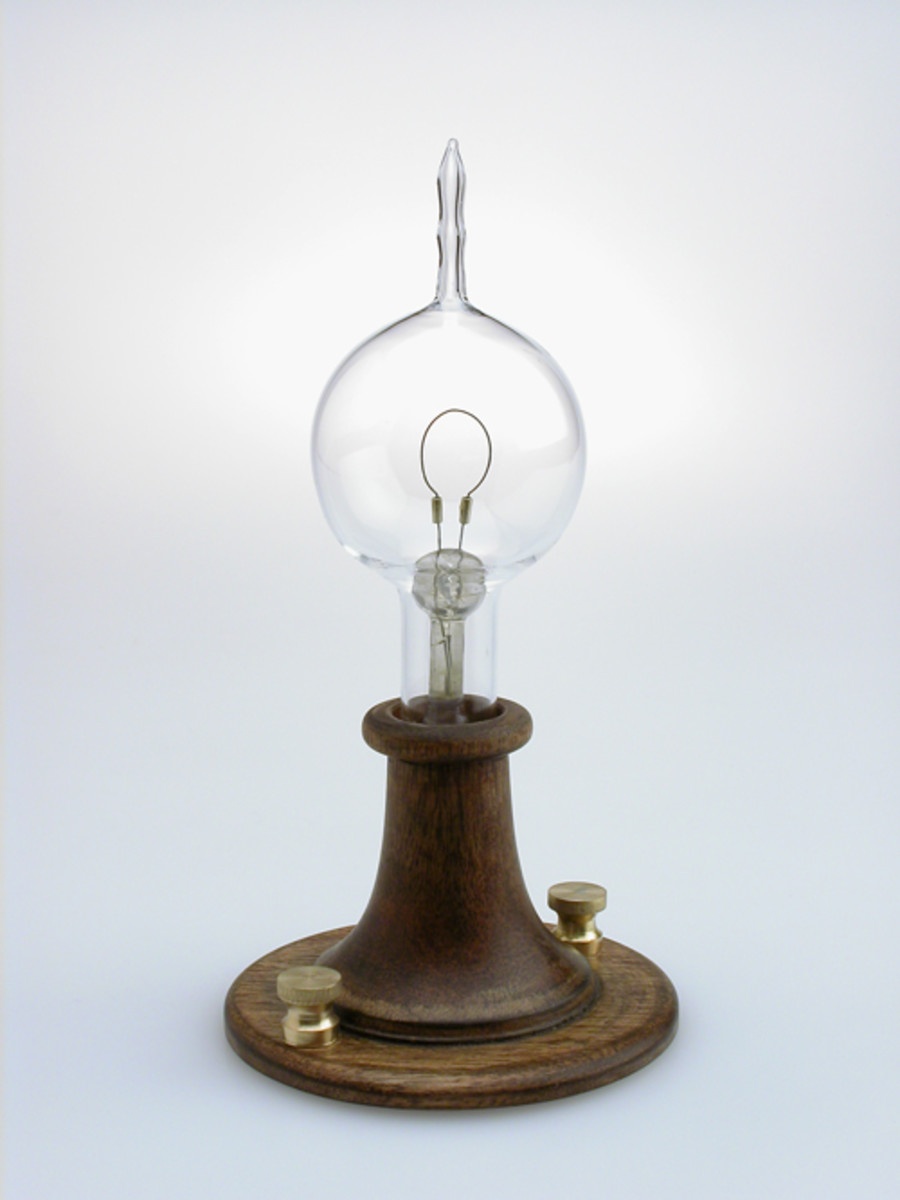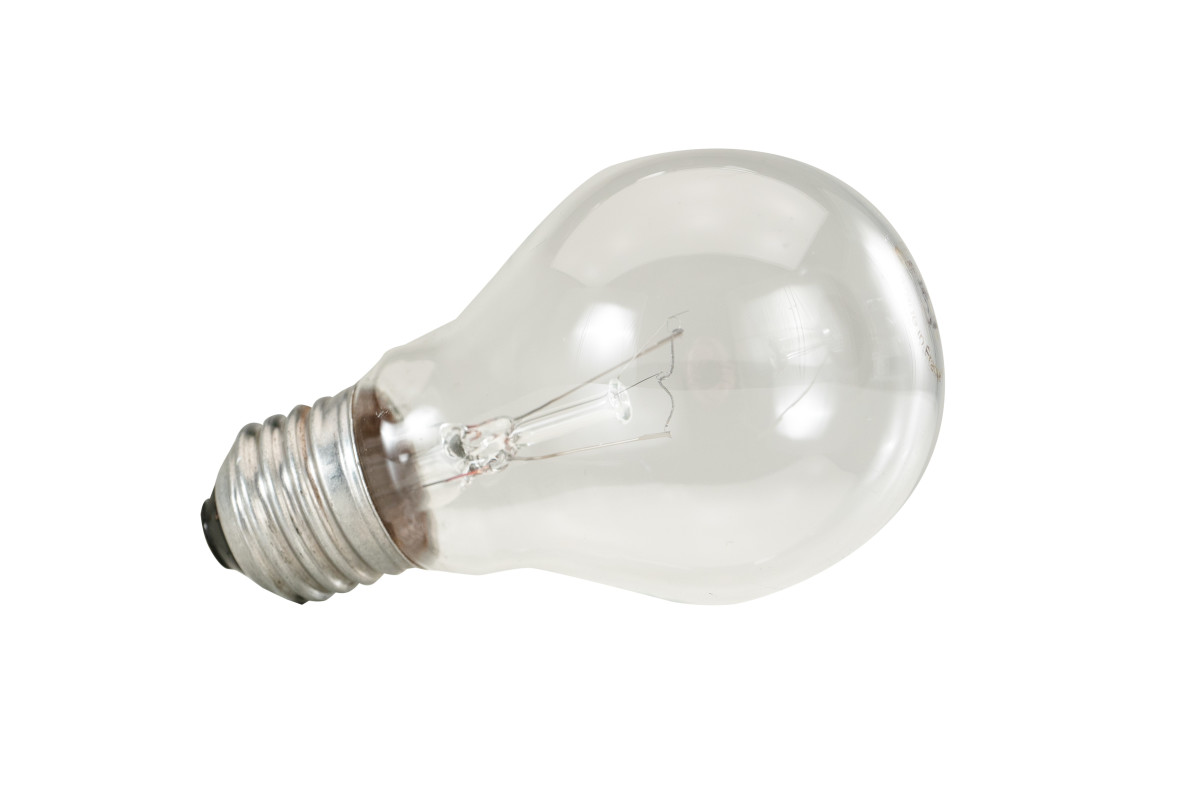- HubPages»
- Personal Finance»
- Frugal Living»
- Household Expenses
How I Saved $100 on My Electric Bill
Cut the cost of your electric bill - help the environment, too!
In today's economy, saving money wherever we can is more important than ever. One of the easiest ways to save money is to cut your electric bill. With some simple changes, you can easily save 10% on your monthly bill. If you go a little further, you can save more - I actually reduced my monthly electric bill by more than $100 a month!
Three years ago, my average electric bill was $155 a month, at an average cost of 7.5 cents a kilowatt hour. That's a lot of power for a single person living alone. Now, my average electric bill is $42, even though my electric company has progressively raised their rates to over 11 cents a kilowatt hour.
Step One: Compact Flourescent Bulbs
By now, I'm sure you have heard of compact flourescent lightbulbs - commonly referred to as CFL bulbs. Many people avoid using them because they think they are expensive, ugly (spiral bulbs) or think that flourescent lights are "yellow" or give them headaches. Today's modern CFL bulbs are none of the above, and come in a variety of shapes and can easily serve your lighting needs in almost any environment.
Along with the "traditional" spiral-shaped CFLs, you can now find bulbs that will fit in ceiling fans, are shaped like candle-flames, can be used in flood-light installations, round decorative bulbs for the bathroom, and even bulbs that can be used with a dimmer switch! Unlike older-style flourescent lights, most modern CFLs do not flicker or flutter at all, which was likely the common cause of headaches in some people. Most CFLs emit a VERY white, bright light, far clearer and cleaner than incandescent bulbs. In fact, the day I first upgraded my living room lighting to CFLs, I must admit I was really ashamed to see just how yellowed and dusty my walls had become - the more so-called "natural" lighting provided by my incandescent bulbs hid just how aged my 10-year-old paint job had become in my living room!
CFL bulbs are more expensive than traditional incandescent light bulbs, but they are not a budget breaker. In fact, they will easily pay for themselves in a very short time, and you will save on replacement costs quickly. A five or six pack of 10 to 15-watt CFLs at Home Depot is $9.99 at most locations, occasionally a dollar or so cheaper. I first swapped out a few bulbs in my garage, shed, and porch nine years ago, so I have been using CFLs for a long time.
Three years ago, I replaced every bulb in my house using these same bulbs. With tax, I spent a total of $32.52 to purchase three 6-packs. My very next electric bill was $14 lower than average - the following bill, in which the entire month had been with the new bulbs, was $19 lower than average. Those bulbs paid for themselves within 3 months. As advertised, CFL bulbs also last a lot longer - I have not replaced a single bulb since the day I upgraded all my lighting three years ago!
It is a good idea to dust your CFL bulbs every few months or so, especially the spiral ones, as dust buildup on these bulbs can interfere with the quality of light. Since they burn far cooler than incandescent bulbs, dust doesn't "burn" off of them light traditional bulbs.
CFL bulbs rarely "burn out" ... they can, however, fade away over time. Generally, most manufacturers "guarantee" they will last up to seven years, however, in my experience, I find that the bulbs seem to lose efficiency starting at about five or six years of high-volume usage (meaning, in use six or more hours a day). The lighting can start to be less bright, less pure. The bulbs can actually start to burn hotter - if you find that a bulb is hot to the touch five minutes after turning it off, it is time to replace it. It's no longer efficient, and may actually be using more electricity than an incandescent bulb! The bulb in my garage is still burning bright and cool nine years after installation... the bulb on my front porch, which sees eight or more hours of use a day, needed to be replaced right around five years.
Step Two: Fire the Electronic Babysitters
If you are anything like me (and millions of other Americans, if the surveys are correct), you leave the television on most of the time you are home, even if you are not actually sitting down in front of it. Whether its on for background noise, or so you can "watch" the news while cooking dinner over in the kitchen, televisions are on for far more hours a day than we actually watch them. I never realized just how much that background noise habit was costing me until I purchased a 50" plasma TV two years ago. I love this TV! It's huge, it's brilliant, the color is fantastic, the detail better than life! And that gorgeous, stunning picture raised my electric bill $65 the very first month. Sure, I watched it a lot... hey, it took me three years to save the money up to buy the dang thing! - but still, SIXTY FIVE DOLLARS just in electricity - ouch!
Whipping out the manual that came with it, I discovered that this TV uses 385 watts per hour when on, 83 watts in standby mode. The 15-year-old 30" TV I replaced only used 78 watts when it was turned ON! I seriously thought about returning it to the store... at $65 more in electric a month, that's $780 a year - that's a mortgage payment! But I really love it, I've never enjoyed watching television so much. So I sat down and thought real hard: I could limit myself to just a few hours a night instead of having it on all day long, or I could cough up another $800 and return it and buy a LCD model that, not only more expensive at the time, but would be 8" smaller.
Or I could break the habit of using the television as a babysitter. But I really like listening to my favorite shows, newscasts, videos and other programming while I am doing other things in the house! The solution to this problem was, as it turned out, already at hand: Leave the home theater sound system on, but turn the TV off. As is true for many of us, I pipe the audio from my satellite box, Playstation, over-the-air tuner, and DVD player directly to my home theater audio system, and the video from all of those devices directly to the TV. All I needed to do to cut the huge electric drain of this lovely new television was to just turn the dang thing off, while leaving the audio on.
And only turn it on when I am actually sitting down in front of it, actually watching something.
If the first thing you do when you enter a room is turn on the television, stop. Instead, just turn on the audio, if you have it wired separately, or turn on a small stereo and listen to some CDs or MP3s. If you don't already wire your audio separately, it's easy to do, and can be done with a few RCA connector cables and possibly other adapters for less than $10. It is, admittedly, a tough habit to break, but if all you are doing is listening to the television, why is the video on?
If you already only have your television on when you are actually watching it, you can reduce the amount of electricity it uses by making a few simply adjustments to the picture: Reduce the brightness and contrast in the video settings. If your TV has a "vivid" option, turn that off or switch to a less bright option. Keep the quality as good as you can, of course, just reduce it some! Those simple changes can reduce your television's electric appetite by a few watts an hour, which quickly adds up.
I saw a $54 drop in my average bill by turning off that big plasma TV when I wasn't actually watching it. It's hard for me to compare it to how much I would have saved if I had done that sooner, with the older TV, but I guestimate if I had broken the electronic babysitter habit, I would have seen a savings of around $8-$15 a month. As it is, while I had reduced the cost of using my new television, it was still costing me more in electric than the old TV did - about $11 more a month. Which is far more reasonable than $65! But still, the goal is to reduce electric usage and costs, not increase them! Which leads me to my next cost-saving technique: Power Strips.
Step Three: Power Strips Everywhere
If you are anything like me, you have a lot of gadgets and electronics laying about your house, sitting on chargers, or just sitting there plugged in waiting for the next DVD or game. Almost every single one of those devices is using electricity, even when turned off. If it is charging, if it uses a remote control, if it has a LED clock, it is using electricity at all times.
Some devices only use a few watts per hour of standby time, some use as much as one of those incandescent light bulbs you replaced in step one. While it may not seem like much, it adds up quickly. As I mentioned above, my new 50" plasma screen television uses 83 watts an hour in standby mode - it was using more power while turned off than a 75-watt incandescent lightbulb uses when on!
So, one night after watching a few movies, I got up to go to bed, and my eyes happened to fall upon the big, ugly power strip that I, like many others, have hanging off the side of the entertainment unit. I got to thinking, and just decided to click it off. Why leave it on for power-surge protecting, providing power to the TV, when I'm not watching it - there is no surge to protect for if there is no power going through it! Duh! After all, the best power surge protection in the world is to simply UNPLUG!
I did that every night for the rest of the month, and my next electric bill was back down to my average prior to buying the TV. My new 50" plasma was now costing me absolutely NO more than my old television did, just by simply turning it off when I wasn't sitting in front of it, and shutting all power off to it when I was out of the house or in bed asleep.
Which, of course, got me to thinking... how much could I save if I did that with every power strip already in the house? What if I put things that use a standby mode or LCD clock, such as the microwave, on a power strip, one I would just easily click on whenever I used it?
So over the next month, that's exactly what I did, with a vengeance. The computers, DVD players, home theater, microwave, everything, even the oven, that used a remote control, a standby mode of any sort, or a LCD clock - everything that used power even when off - got put onto a power strip. Most already was on power strips for surge protection, and I had enough spare strips laying about to cover the rest.
I do admit it took a bit of time to get into the habit of going through the house every night before I went to bed and clicking all those power strips off. Shutting down the computer nightly. Ejecting the DVD and putting it away before powering down. The clock thing wasn't an issue - they were always flashing 00:00 anyway, as I never bother setting them (we always seem to have a major thunderstorm flicking the power off and on within hours of my setting them!) ... I invested in cheap battery-powered decorative wall clocks years ago.
This new habit, that takes about one minute every night, less depending upon what I did that evening, paid off big-time: My first full month's electric bill was $28 below my average.
Yes, I was spending $28 a month just to keep power going to devices that were turned off! That is $336 a year - or an average months' car payment for many Americans!
You can easily save money on your electric bill by using what you likely already are using: power strips. Just flick them off at night before you go to bed, and depending upon how many devices you have plugged in, watch the savings grow.
Earlier this year, while helping my good friend Brandy install CFLs throughout her house so she could save a few bucks a month on her power bill, I mentioned how much I was saving by simply using power strips. She didn't believe me, and besides, she said, the kids would never go for not being able to leave their games-in-progress paused all night, much less have to take a few seconds to turn the power strip on to watch TV or nuke a Hot Pocket. I decided to show her the math - but hey, like most people, I'm kinda lazy, and I really didn't want to dig through all her manuals (assuming she could find them) or move stuff around to read the UL label on the back to find out what was using how much power. So I decided to invest $35 in the niftiest device ever - the Kill-A-Watt Electricity Usage Monitor.
To use the Kill-A-Watt, you just simply plug your device into it, and it will show you how much power it is using, and, if you program it with the price your electric company charges, it will even calculate the cost-per-day, month, or year. So, with some homemade chocolate chip cookies in hand, I went over to Brandy's house, and we started plugging away.
In the living room alone, her 36" LCD television, DVD player, Blu-ray player, XBox 360, VCR, satellite box, cable box, and Tivo box combined were costing her nine cents an hour when they were turned off. Doesn't sound like much... but that is $2.16 a day, $64.80 a month if none of those devices were turned on at all - more when they are turned on!
For Brandy, a single mom with four children, $64.80 a month is a lot of money. No wonder her electric bill was routinely $240 a month!
In the boy's bedroom is a Playstation 2, a 20" television, and a computer. The girl's had two computers in their bedroom, along with a 13" tv and a small stereo. In her own bedroom, she had a computer and a 24" tv. In the kitchen, two microwaves ("so the kids don't argue over it"), an electric stove with LCD clock, and electric coffee maker with clock and timer function ("never could figure out how to set it"). All told, when we added everything together, $92 of her electric bill every single month was going to provide power to things that were TURNED OFF.
Off we went to Walmart for a quick expenditure of $30 to buy power strips.
Step Four: Freeze the food, not the house
When Brandy and I got back from Walmart, we decided to check a few other things, like her six-year-old refrigerator, her 13-year-old dryer, her 8-year-old washing machine, and her three-year-old dishwasher.
The dryer and washing machine actually weren't bad at all, and were, despite their age, within the average of some of the most efficient devices available on the market today. The refrigerator, on the other hand, was shocking, and the dishwasher could be better.
Her refrigerator was using an average of 670 kilowatt hours a month, at a cost of $74 a month. Wow. Being a single mom, however, she really couldn't afford to replace it, so we hopped onto the 'net and did a little research. First thing we did was raise the temperature settings - both her freezer and refrigerator were set at the lowest possible temperature. Then, we tried the dollar-bill trick and discovered that the door seals were leaking air everywhere! Finally, we pulled the dang thing away from the wall and cleaned the back of it, and using a broom-stick wrapped with a towel, underneath it.
Dollar-bill trick: Open your refrigerator door, take a dollar bill, stick it between the door and the fridge compartment, close the door. If the dollar bill is difficult to pull out, your seal is still good. If it comes out very easily - or worse, drops to the floor like it did with Brandy's fridge, you need to replace the seal. Or possibly, just clean it :)
We found a replacement door seal online for $14, which took the two of us about an hour to install. Plugged it back into the Kill-A-Watt, and what do you know, the average dropped to 119 kilowatt hours a month, or about $13 a month. That is a $61 a month savings, or $732 a year. We then went to my house, and did the same thing. Although I didn't need to replace my door seal, I did reduce my average electric bill by another $11 a month by simply changing my temperature settings and cleaning the coils.
By the way, Brandy's dishwasher, using the dryer, was costing her about $25 a month to do one load a day. By simply turning the dishwasher off and opening the door, letting the dishes air-dry, we could reduce her costs down to about $11 a month.
Over the next two months, as Brandy and the kids improved their power usage habits, such as turning the power strips off every night (the kids have since made it into a game, whoever gets the last one "loses"), not hanging out at the fridge with the door wide open looking for something to eat, not using the dry cycle of the dishwasher, using CFLs and, of course, turning TVs and other devices off when not in use, has lowered her average electric bill down to $77 a month, from $240. Which is a great thing, since she has since been laid off of her full-time job, and is now only working part-time at a local grocery store.
Step Five: Do it now, not later
Don't wait till this weekend to start making changes in your power consumption, do it now! You probably already have most of your electronic devices on power strips - go turn the off at the strip right now, as you head to bed after reading this remarkably long-winded article! Go whip a dollar bill out of your wallet and check the door seal on your fridgerator - it probably need cleaning, if not replacing. Adjust the temperature on it and the freezer. Turn the lights off in the empty bedrooms and bathroom - why are they on when everyone is in the living room? Get started now, and save some money, maybe even enough to pay an extra mortgage payment or two this year.








